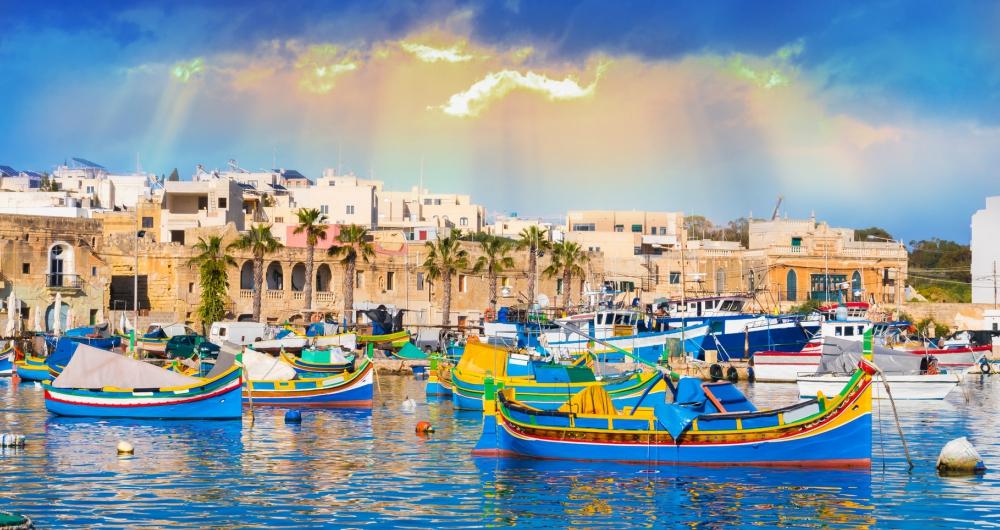In This Article
Need a Mediterranean island escape rich in history, beaches, and charm? Head to Malta! This sun-soaked archipelago south of Sicily offers ancient temples, turquoise coves, and a vibrant blend of cultures. Whether you're swimming in hidden lagoons, exploring medieval cities, or enjoying fresh seafood by the sea, Malta is a stunning destination for every traveler.
Malta Highlights:
- For Adventurous Travelers: Dive into the Blue Hole in Gozo – Explore dramatic underwater arches and caves at one of Europe’s top diving sites.
- For History Buffs: Walk the streets of Mdina, the Silent City – Discover medieval architecture, palaces, and panoramic views from this fortified hilltop city.
- For Shoppers: Explore Valletta’s Merchant Street and markets – Shop for handmade lace, Maltese glass, and local art in the historic capital.
- For Couples: Sail around the Grand Harbour at sunset – Take a romantic cruise past limestone fortresses and charming waterfront villages.
- For Families: Swim and relax at Mellieha Bay – Malta’s largest sandy beach with shallow waters perfect for kids and family fun.
Best Time to Visit Malta
The best time to visit Malta is during spring (April–June) and fall (September–October). You'll enjoy warm temperatures, fewer crowds, and ideal conditions for sightseeing and swimming. July and August are hottest and busiest, while winter offers a quiet escape with mild weather.
How to Get to Malta
- By Air: Malta International Airport (MLA) in Luqa is the island’s only airport, with direct flights from major European cities.
- By Ferry: Daily ferries connect Malta to Sicily, and inter-island ferries run between Malta, Gozo, and Comino.
- By Cruise: Malta is a popular port of call on Mediterranean cruise itineraries.
Where to Stay in Malta
- Recommended for Families: db Seabank Resort + Spa – All-inclusive resort near Mellieha Bay with pools, entertainment, and kid-friendly dining.
- For Couples: Casa Ellul, Valletta – Romantic boutique hotel in a historic palazzo with elegant rooms and rooftop hot tubs.
- For a Boutique Stay: The Duke Boutique Hotel, Victoria (Gozo) – Stylish, central location with sea views, perfect for exploring Gozo’s highlights.
Best Things to Do in Malta
1. Casa Rocca Piccola
Tour noble rooms and admire antiques on a romantic cultural trip.
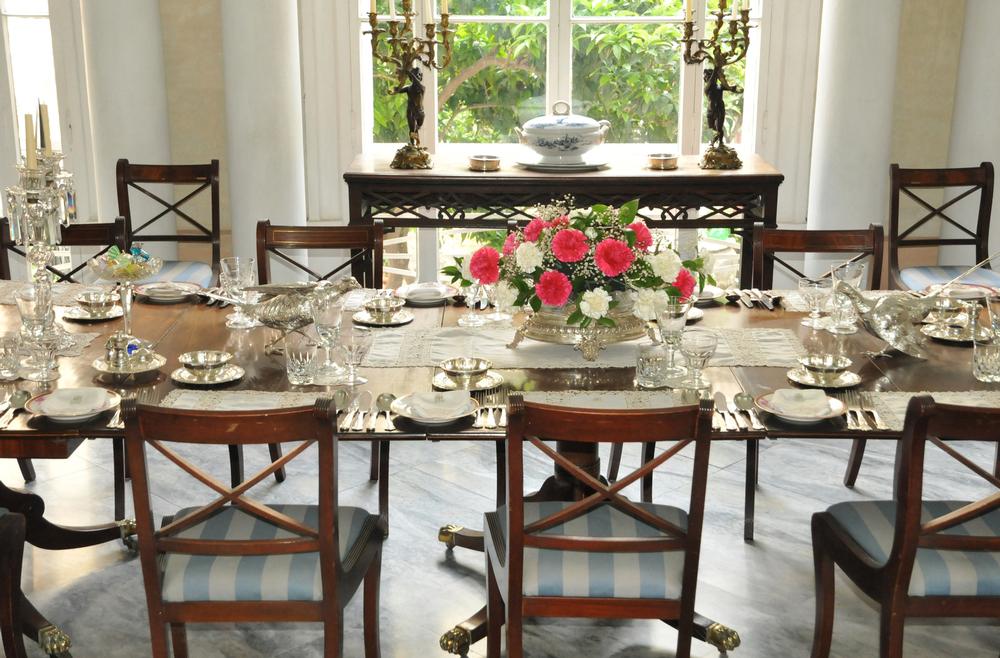
© Courtesy of PackShot - Fotolia.com
Casa Rocca Piccola is the result of the Knights of St. John attempting to build a city beautiful enough to rival Venice and Paris. The 16th century palace was designed with aesthetic appeal in mind to beautify the streets of Valletta. The result is something that visitors today still view in awe; the house has over fifty rooms comprising interconnecting bedrooms, two dining rooms, two libraries, many drawing rooms, and its own chapel. Visitors will also come across stunning furnishings from all over Malta and Europe including a collection of paintings, silver antiquities, and furniture. They can also view one of the largest private collection of antique costumes in Malta as well as a large collection of Maltese lace.
74 Republic St, Valletta, Malta, Phone: +3-56-21-22-14-99
2. Domvs Romana
See Roman mosaics and explore ancient ruins during a quick visit.
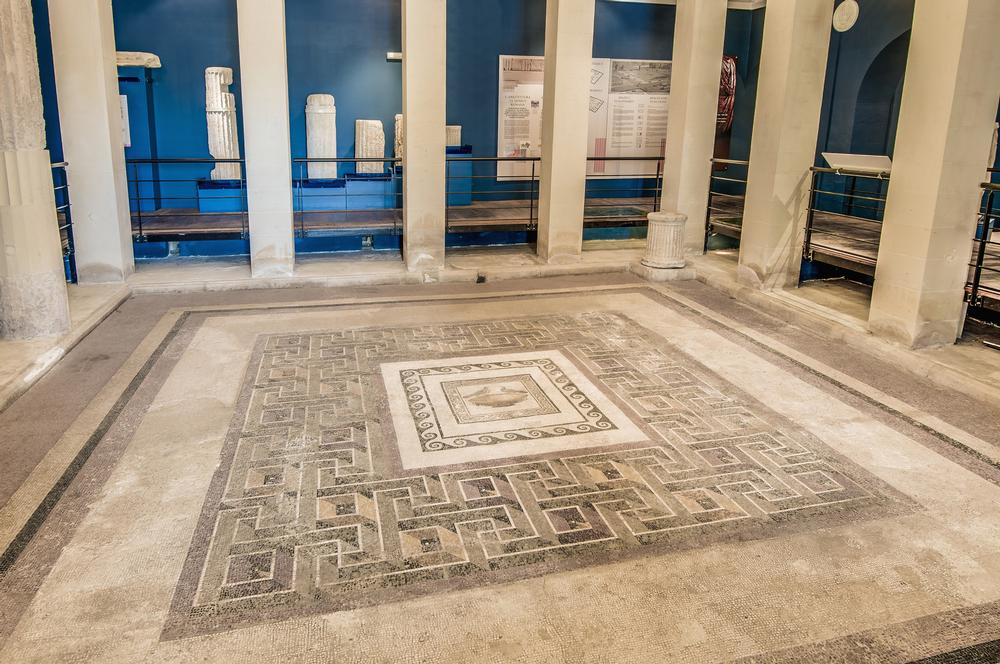
© Courtesy of Anibal Trejo - Fotolia.com
The ruins of Domvs Romana, a museum run by the Heritage Malta, is dedicated to the findings from a site that was once a Roman-era house built in 1st century BCE. In the 11th century the site was also used as a Muslim cemetery, and it wasn’t rediscovered again till 1881 when archaeological excavations found a number of tombstones, artifacts, statues, and Roman mosaics. There are guided tours of the museum that give visitors insight into the many pieces that are seen there as well as the history of the site and its surroundings.
Gheriexem, Ir-Rabat RBT 1202, Malta, Phone: +3-56-21-45-41-25
3. Fort Rinella
Discover military history and watch cannon displays on an exciting outing.
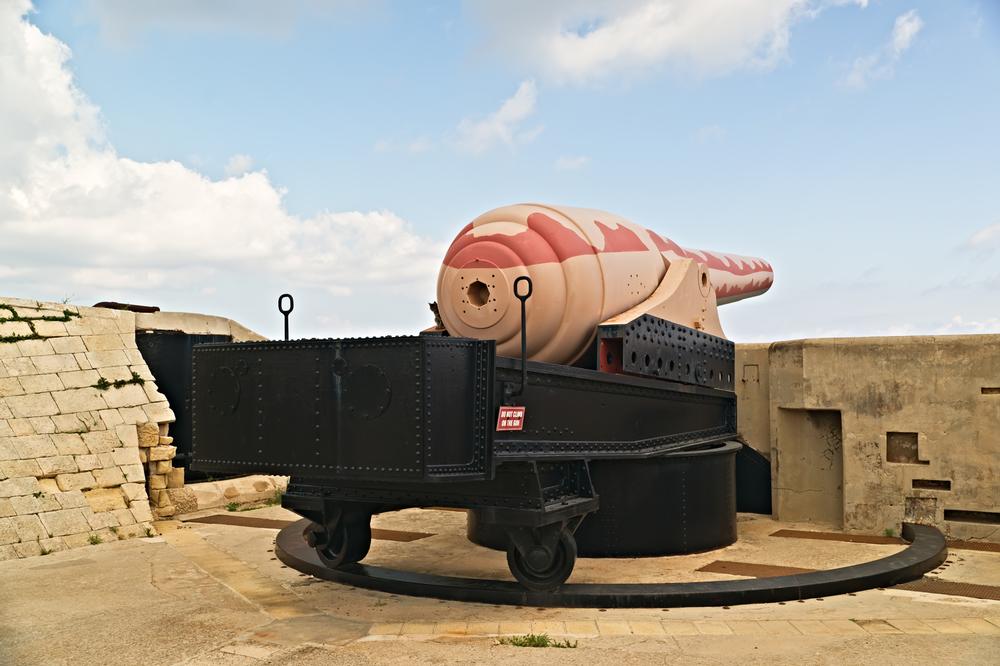
© Courtesy of Yory Frenklakh - Fotolia.com
Fort Rinella, or the Rinella Battery, was built in 1878 by the British to contain a single Armstrong 100-ton 450 mm gun that was to be used to protect the route to India through the Mediterranean from other countries. In 1996 the fort was restored and reopened as an open-air museum. In addition to the gun, which still works and is shot once a year, visitors can also see a steam engine and hydraulic machinery. There are full-scale military reenactments throughout the year with soldiers in attire and live firings. Visitors can either use an audio guide or go on a guided tour to better experience Fort Rinella.
Kalkara, Malta, Phone: +3-56-21-80-09-92
4. Fort St. Angelo
Climb fortress walls and look at grand harbor views on a summer weekend.
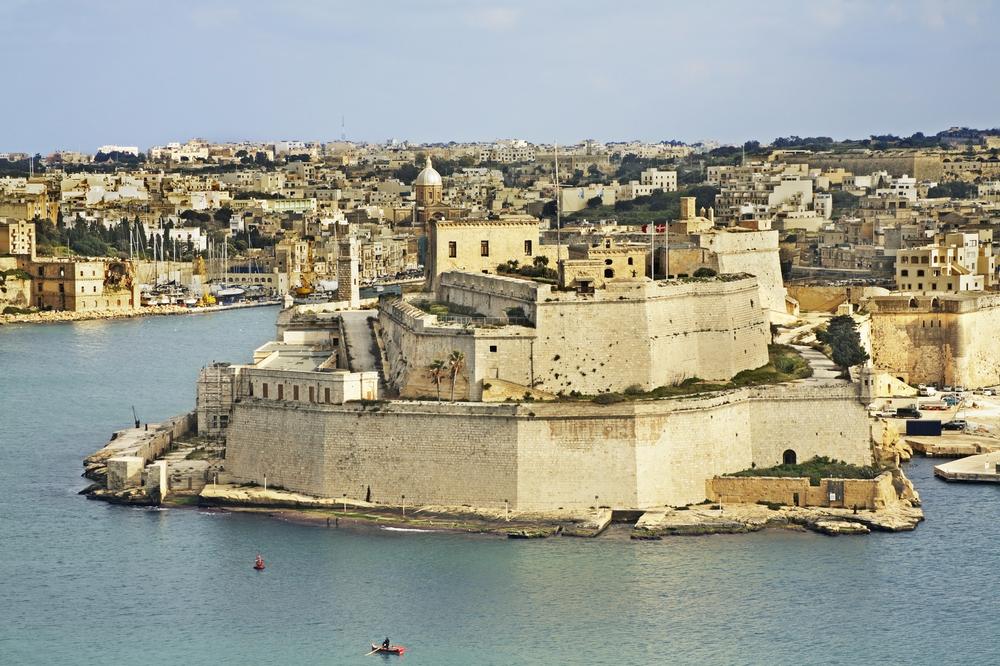
© Courtesy of Andrey Shevchenko - Fotolia.com
A large bastioned fort that can be found in the middle of the Grand Harbour, Fort St. Angelo was originally built to serve as a castle and was called Castello al Mare or Castrum Maris. The Order of Saint John rebuilt it as a fort, and it is best known for being the Order’s headquarters during the 1565 Great Siege of Malta. Visitors can go on a guided tour and explore the many aspects of the fort, including the main gate and the Chapel of the Nativity of Our Lady. Those who love the supernatural can ask their guide to tell them about the many ghost stories affiliated with the fort, including that of the Grey Lady and Ottoman soldiers who were executed during the Great Siege.
Birgu Waterfront, Il-Birgu, Malta, Phone: +3-56-22-95-40-00
5. Ghar Dalam
Walk into prehistoric caves and uncover unusual fossil finds.
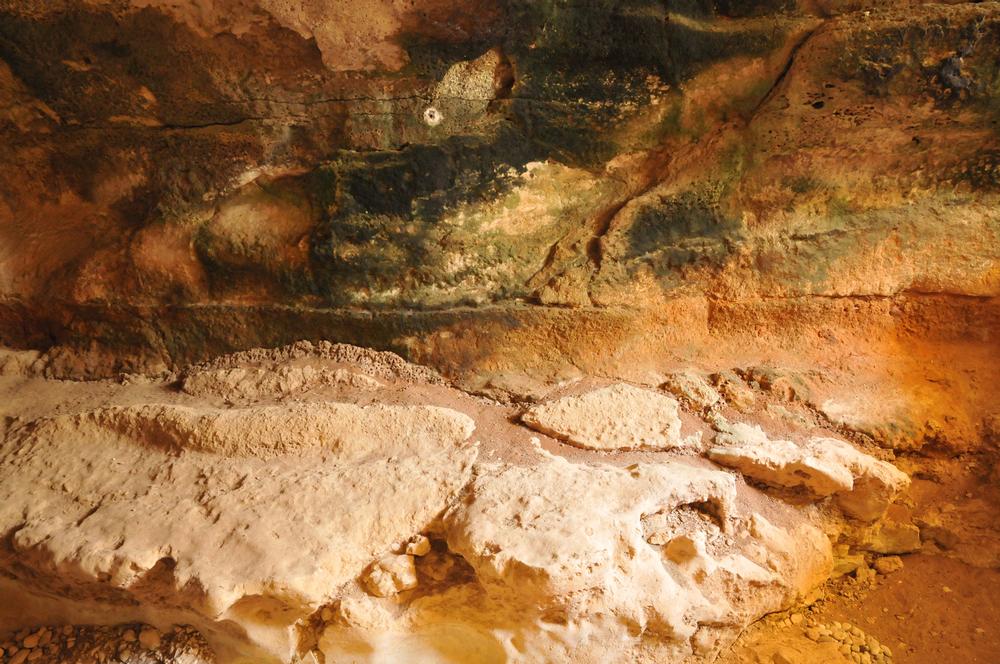
© Courtesy of PackShot - Fotolia.com
Ghar Dalam, which translates to the Cave of Darkness, is a cave that contained the skeletal remains of animals that were stranded and then became extinct in Malta during the Last Glacial Maximum. The remains, which belonged to dwarf elephants, deer, bears, and hippopotamus, were excavated and gave insight to Malta’s history; the cave also had evidence of the first human settlement in Malta. The cave’s interesting history also shows that it was used as an air-raid shelter during World War II. Visitors can now explore the cave as well as the on-site museum to learn about its past and get up close and personal with the animal bones and human artifacts.
Ghar Dalam Cave, Triq Ghar Dalam, Birzebbuga, Malta, Phone: +3-56-21-65-74-19
What to do if you are traveling with kids:
6. Gozo Museum of Archaeology
Explore ancient tools and learn local history on an affordable museum trip.
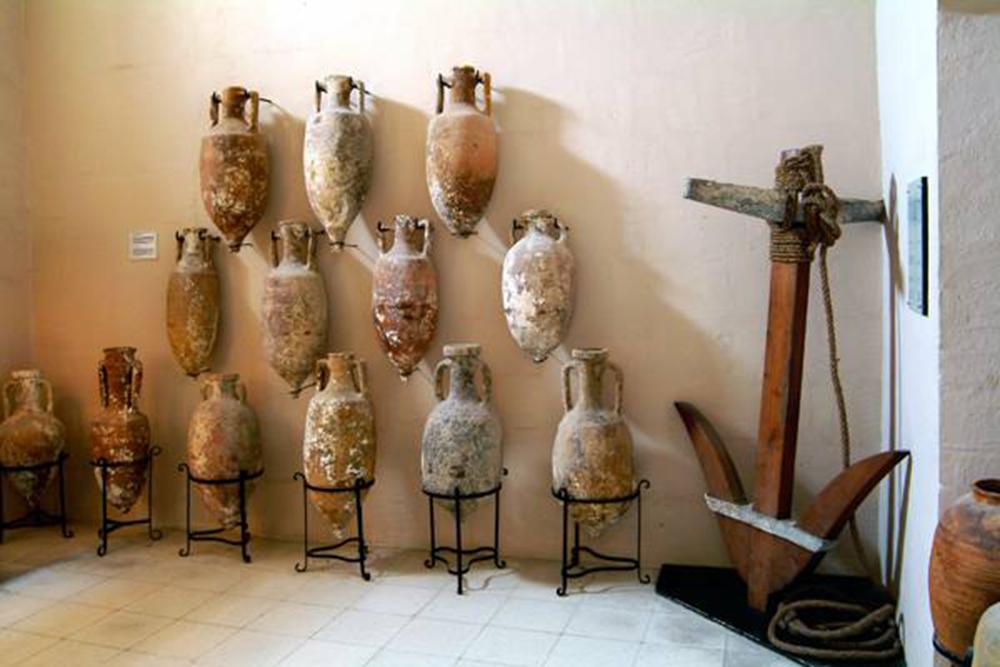
© Gozo Museum of Archaeology
Having opened in 1960, the Gozo Museum of Archaeology was the first public museum in Gozo. The museum can be found in a 17th century house called Casa Bondi, which is listed on the National Inventory of the Cultural Property of the Maltese Islands. Visitors can observe the many exhibits that focus on archaeological relics and artifacts from the Island of Gozo, starting from present day and going back to the prehistoric era. One of the most popular exhibits at the Gozo Museum of Archaeology is the Majmunah Stone, a 12th century marble tombstone that is said to be the biggest and only visual relic of Islamic presence in Malta. The stone put the museum on center stage, and visitors flock to its exhibit throughout the year.
Triq Bieb l-Imdina, Ir-Rabat Ghawdex, Malta, Phone: +3-56-21-55-61-44
7. Gozo Nature Museum (Natural Science Museum)
Admire native species and see science exhibits with curious kids.
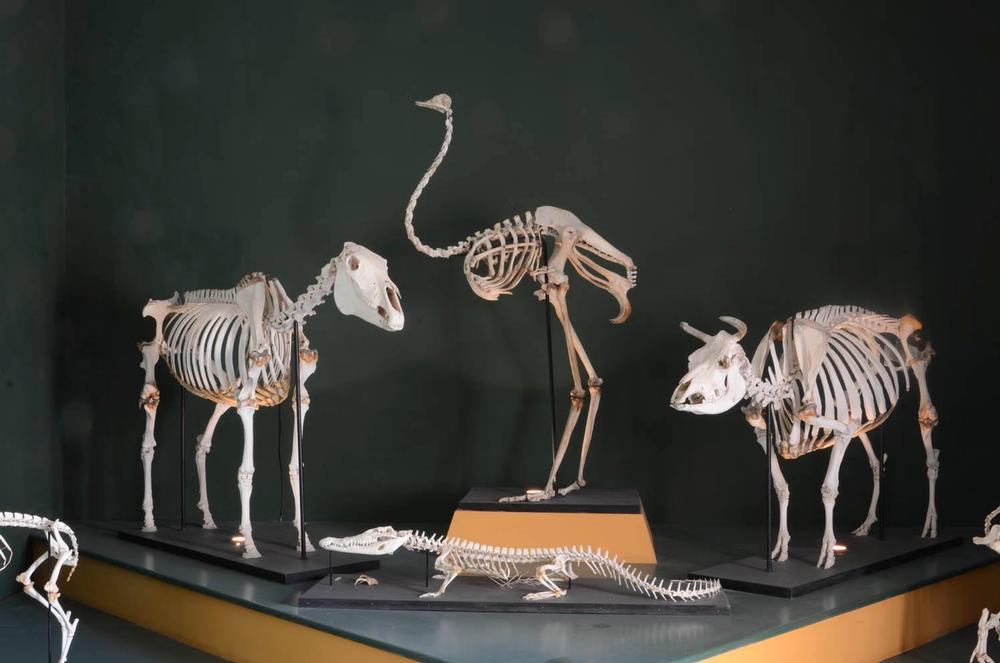
© Gozo Nature Museum (Natural Science Museum)
The Gozo Nature Museum highlights many of Gozo’s natural resources and how they were used in the past. The museum can be found in a group of houses within the Cittadella in the oldest part of Gozo. Visitors will come across many artifacts that display the island’s minerals, geology, insects, marine life, habitats, ecosystems, and human and animal evolution. Some of the more popular displays are of the marine organisms that were deposited on the seafloor over 35 million years ago, a tiny specimen of a moonstone, and fragments of fossil bones from the Maltese Islands.
Triq il-Kwartier San Martin, Ir-Rabat Ghawdex, Malta, Phone: +3-56-21-55-61-53
Activities and Attractions for Couples and Singles:
8. Gran Castello Historic House
Step into Gozo’s past and enjoy peaceful views on a retirement trip.
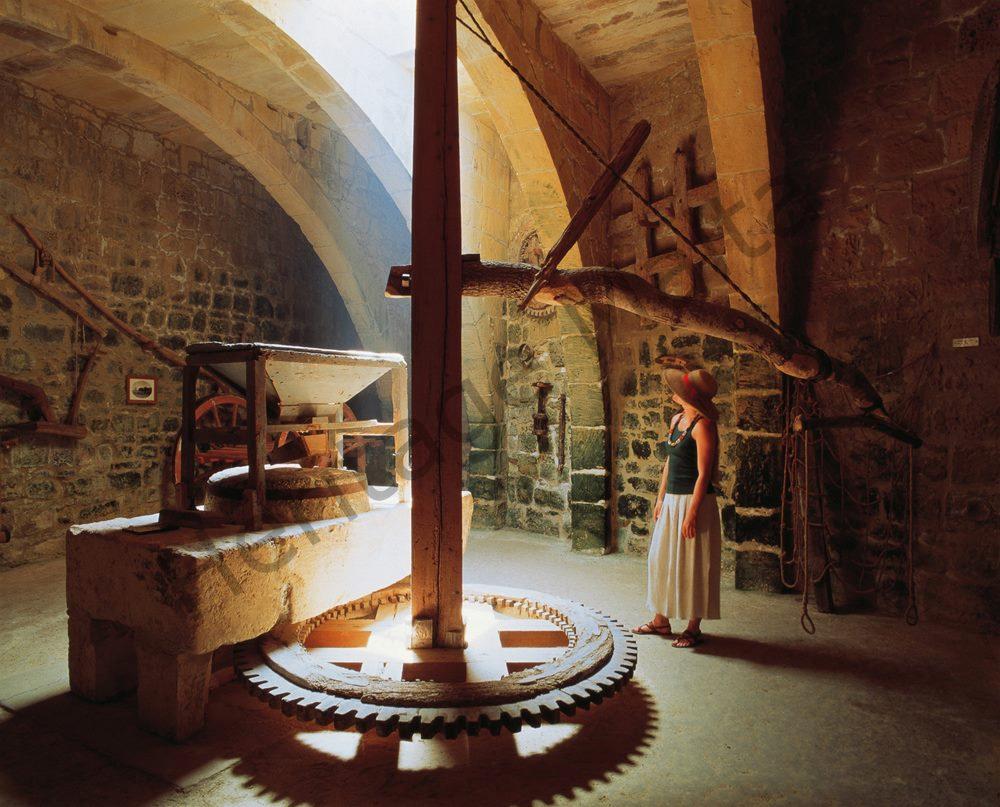
© Gran Castello Historic House
Formerly known as the Folklore Museum, the Gran Castello Historic House
is a historic museum that can be found within several 16th century houses in the Cittadella. The museum has exhibits dedicated to the Gozitan folklore, and the collection has many artifacts from rural and traditional households on the Maltese Islands. Some of the most popular exhibits include those dedicated to agriculture, which can be seen in the reconstructed mill room, the cotton industry with the spinning wheel and cotton gin, and the room that showcases local crafts such as weaving and lace-making.
Triq Melite Bernardo de Opuo, Ir-Rabat Ghawdex VCT 1860, Malta, Phone: +3-56-21-56-20-34
9. Hagar Qim
Visit Neolithic temples and feel the mystery on a fall day trip.
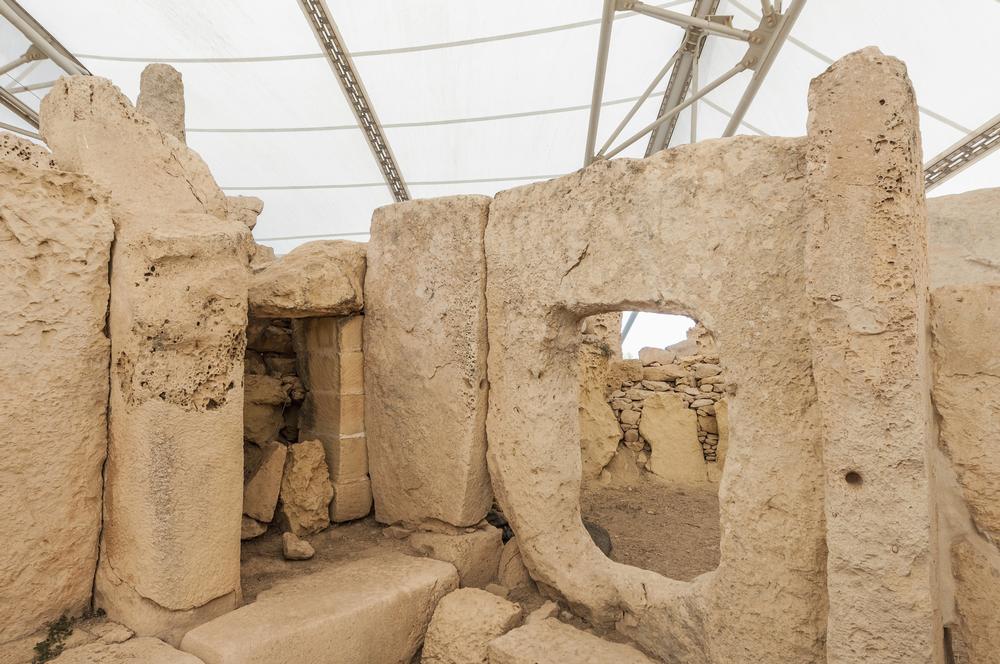
© Courtesy of Anibal Trejo - Fotolia.com
Hagar Qim, which translates to “standing/ worshipping stones,” is a megalithic temple complex that dates back to the Ggantija phase from around 3600 to 3200 BCE. The UNESCO World Heritage Site is one of the most ancient religious sites in the world and is considered a unique architectural masterpiece. The temple is constructed from globigerina limestone, the second oldest rock in Malta. The temple complex has one main temple and three additional structures; visitors can explore these as well as the dedicated sections for offerings, animal sacrifices, and other rituals within these.
Triq Hagar Qim, Il-Qrendi QRD 2501, Malta, Phone: +3-56-21-42-42-31
10. Hal Saflieni Hypogeum
Descend into sacred chambers and explore rare underground sights.
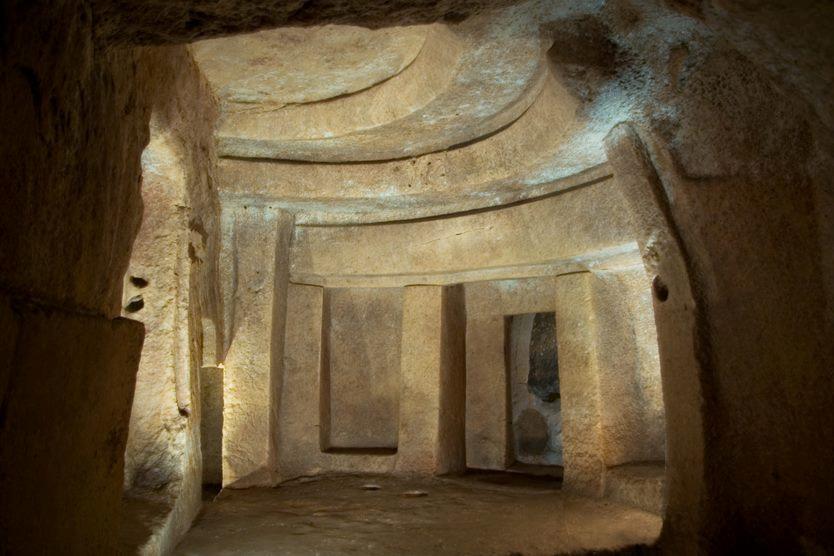
© Hal Saflieni Hypogeum
The Hal Saflieni Hypogeum was discovered in 1902 by accident when workers were doing construction for a new housing development. The Neolithic subterranean structure has since then been excavated and identified as a sanctuary dating back to the Saflieni phase from 3300 to 3000 BCE. Visitors can explore the UNESCO World Heritage Site from which archaeologists uncovered the remains of over 7,000 individuals. Designated areas include the main chamber, the oracle room, a snake pit, and the Holy of Holies. Because the hypogeum is a popular attraction and only a limited number of visitors are allowed per day, visitors are urged to book tickets in advance.
Triq Ic Cimiterju, Rahal Gdid PLA 1116, Malta, Phone: +3-56-21-80-50-19
Where to Eat in Malta
- Recommended for Families: Gululu Restaurant, St. Julian’s – Waterfront Maltese eatery with kid-friendly portions and traditional dishes.
- For Fine Dining: De Mondion, Mdina – Michelin-starred restaurant offering refined Mediterranean cuisine with breathtaking views.
- For a Casual Meal: Rubino, Valletta – Cozy bistro known for traditional rabbit stew and rustic Sicilian-Maltese fusion plates.
If you are interested in local events:
- For Culture: Malta International Arts Festival (July) – Classical music, dance, and theater in historic venues across the islands.
- For History Fans: In Guardia Parade (Sundays, select months) – Historical re-enactment of 16th-century knights in Fort St. Elmo.
- For Carnival Lovers: Malta Carnival (February) – Colorful floats, parades, and costumes in Valletta and Nadur (Gozo).
Day Trip Itineraries Within 30 Minutes of Valletta, Malta:
- For Seaside Charm: Marsaxlokk Fishing Village (30 min) – See colorful luzzu boats, shop the Sunday fish market, and enjoy seafood by the bay.
- For History: Mdina (25 min) – Wander Malta’s silent medieval city, explore noble palaces, and enjoy panoramic views.
- For Beaches: Golden Bay (30 min) – One of Malta’s best sandy beaches with sunbeds, trails, and cliffside sunsets.
- For Nature Lovers: Dingli Cliffs (30 min) – Hike along Malta’s highest point with sweeping sea views and quiet paths.
- For Local Flavor: Mosta Dome & Market (20–25 min) – Visit the massive church with one of the world’s largest domes and enjoy a local farmers market.
- For Snorkeling: St. Peter’s Pool (30 min) – Natural rock pool with crystal-clear waters perfect for a scenic dip or cliff jump.
Frequently Asked Questions:
-
What makes Malta a unique destination?
-
From megalith temple complexes and mystical caves to intricate catacombs and medieval dungeons, Malta is filled with a curious mystery that visitors will want to uncover during their vacation.
-
What kind of history does Malta offer?
-
The island has an intriguing history that takes visitors back in time in terms of architecture, beauty, art, and flair.
-
What are some of the best things to do in Malta?
-
Here are the best things to do in Malta.
At a Glance:
| Best Time to Visit |
Places to Stay |
Tips for Visiting |
| Spring (March-May) – Mild temperatures and fewer crowds. |
The Phoenicia Malta – A luxurious stay near Valletta’s historic sites. |
Explore Mdina – Wander through the ancient "Silent City" with stunning medieval architecture. |
| Summer (June-August) – Warm and ideal for beach and water activities. |
Kempinski Hotel San Lawrenz – A relaxing resort on Gozo island. |
Swim at the Blue Lagoon – Enjoy crystal-clear turquoise waters on Comino Island. |
| Fall (September-November) – Pleasant weather and fewer tourists. |
Corinthia Palace Hotel – A stylish and tranquil retreat in central Malta. |
Visit the Hal Saflieni Hypogeum – Explore a prehistoric underground burial site. |
Plan Your Trip


